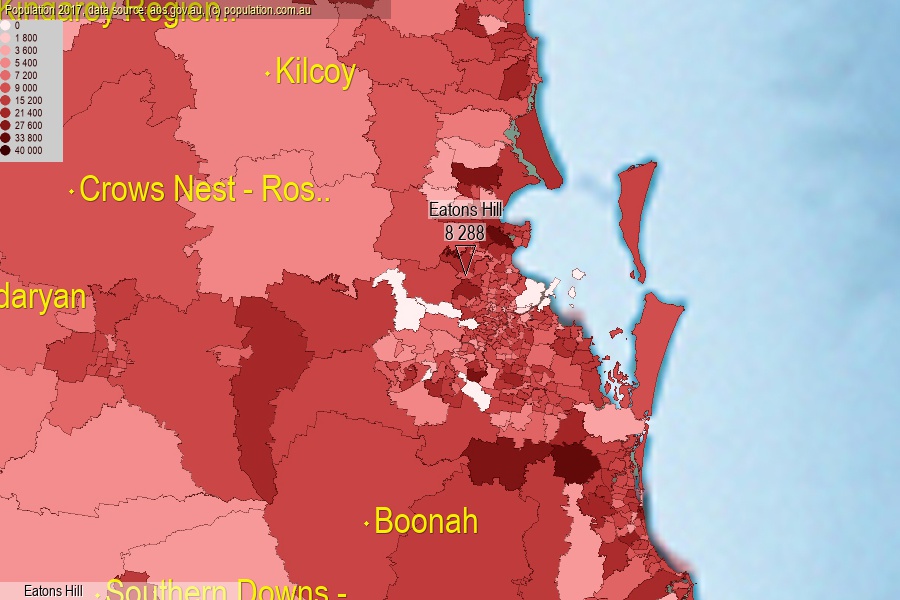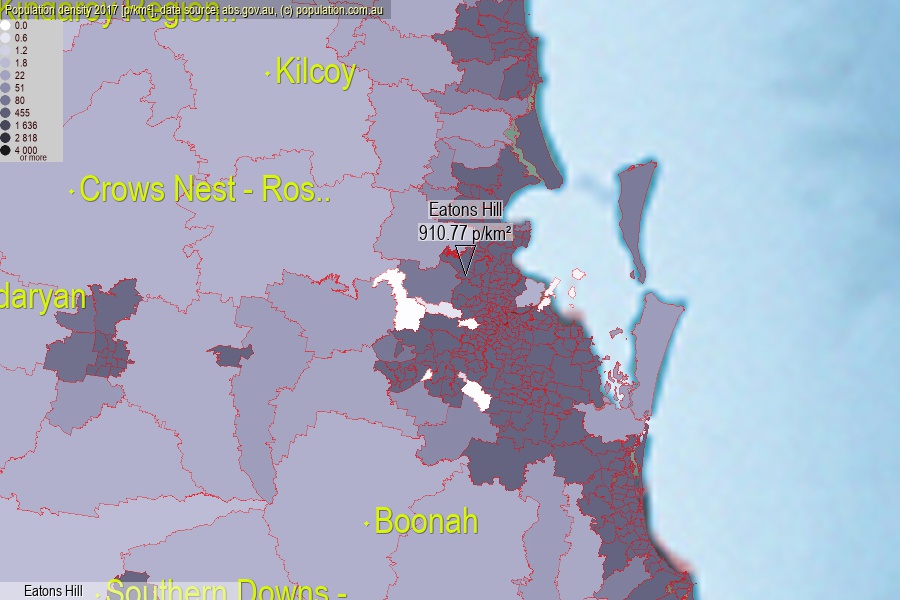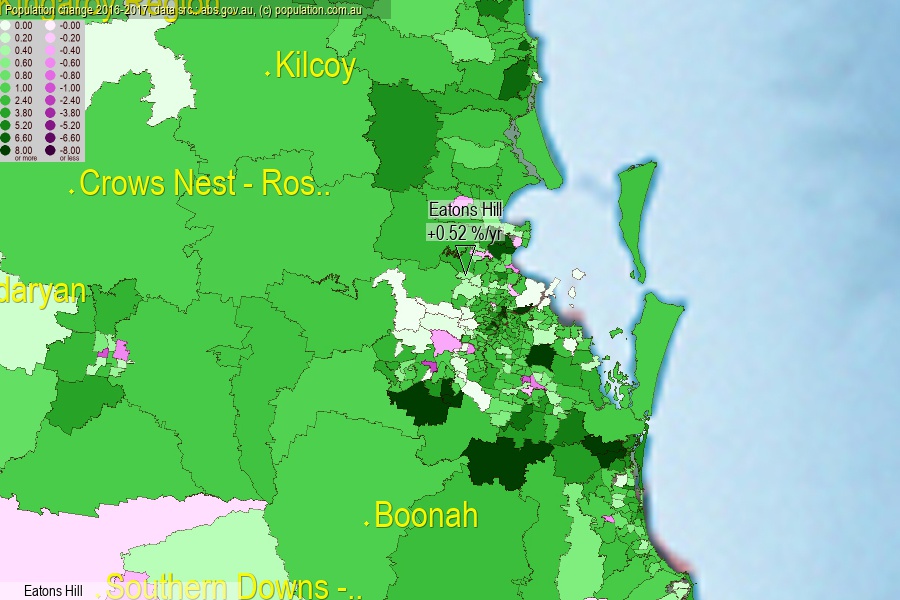 population.com.au
population.com.auLast official estimated population of Eatons Hill (as Statistical Area Level 2) was 8 288 people (on 2017-06-30)[2]. This was 0.03% of total Australian population and 0.166% of QLD population. Area of Eatons Hill is 9.10 km², in this year population density was 910.77 p/km² . If population growth rate would be same as in period 2016-2017 (+0.52%/yr), Eatons Hill population in 2025 would be 8 640. [0]



Click to enlarge. Eatons Hill is located in the center of the images.
Population [people], population density [p./km²] and population change [%/year] [2]
View borders » (new window) [4]
[1991-1992] +12.04 %/Yr.
[1992-1993] +12.99 %/Yr.
[1993-1994] +7.52 %/Yr.
[1994-1995] +8.95 %/Yr.
[1995-1996] +9.71 %/Yr.
[1996-1997] +11.64 %/Yr.
[1997-1998] +12.47 %/Yr.
[1998-1999] +9.78 %/Yr.
[1999-2000] +9.04 %/Yr.
[2000-2001] +8.69 %/Yr.
[2001-2002] +7.78 %/Yr.
[2002-2003] +10.88 %/Yr.
[2003-2004] +6.71 %/Yr.
[2004-2005] +5.63 %/Yr.
[2005-2006] +2.38 %/Yr.
[2006-2007] +1.68 %/Yr.
[2007-2008] +2.86 %/Yr.
[2008-2009] +3.33 %/Yr.
[2009-2010] +1.72 %/Yr.
[2010-2011] +1.05 %/Yr.
[2011-2012] +0.42 %/Yr.
[2012-2013] +0.11 %/Yr.
[2013-2014] -0.25 %/Yr.
[2014-2015] +0.05 %/Yr.
[2015-2016] -0.45 %/Yr.
[2016-2017] +0.52 %/Yr.
[0] Calculated with linear interpolation from officially estimated population
[1] Read more about SA2 and Australian Statistical Geography Standard (ASGS) on abs.gov.au
[2] Population data from Australian Bureau of Statistics (Population and density: 2017; change: 2016-2017)
[3] Digital Boundaries: Australian Statistical Geography Standard (ASGS) 2016.
[4] Border coordinates are simplifyed using Ramer-Douglas-Peucker algorithm.